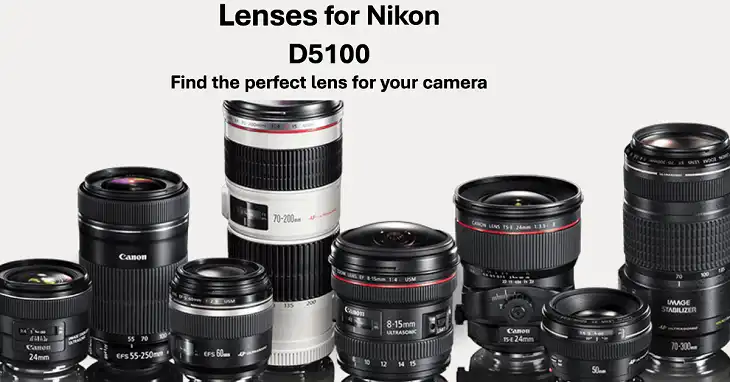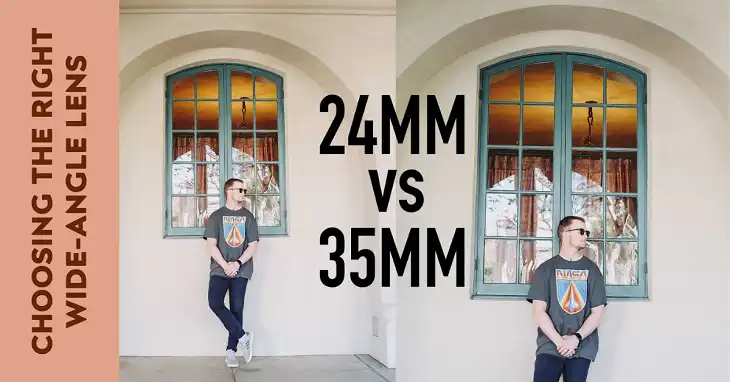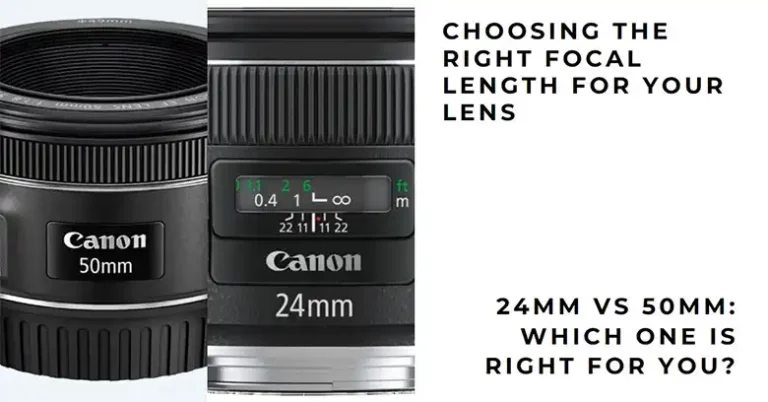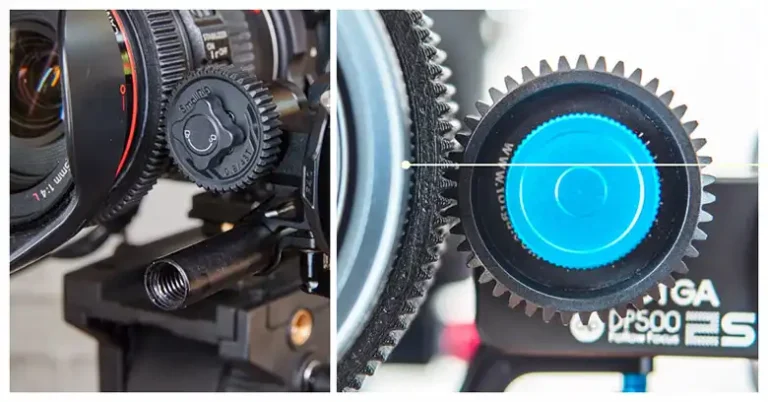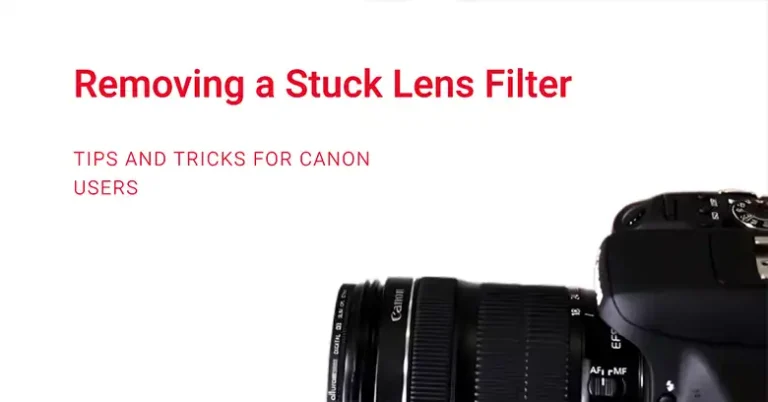18-55mm Lens vs 75-300mm Lens: An In-Depth Comparison
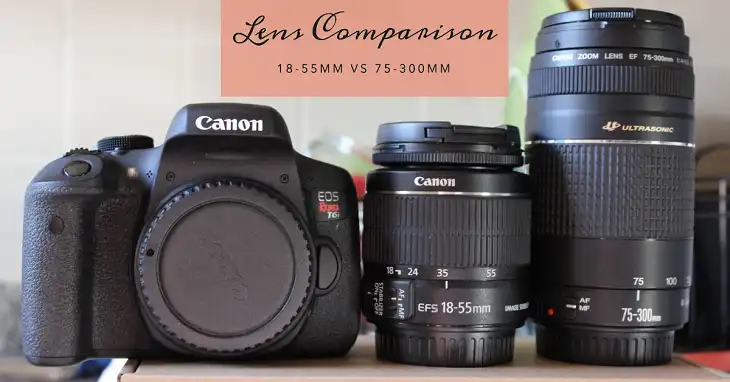
When you’re just starting out in photography or looking to expand your lens collection, you’ll often come across two popular zoom lenses: the 18-55mm and the 75-300mm. These lenses represent two different ends of the focal length spectrum. Understanding the differences between these lenses is crucial for making the right choice for your photography needs.
The 18-55mm lens is often referred to as a “standard zoom” or “kit lens” because it’s frequently bundled with entry-level DSLR and mirrorless cameras. On the other hand, the 75-300mm is a telephoto zoom lens, designed for capturing distant subjects.
Let’s dive deeper into understanding these lenses and how they can impact your photography.
How Focal Length Affects Photography
To truly grasp the difference between these lenses, we need to understand what focal length means in practical terms. The focal length of a lens is the distance between the lens’s optical center and the camera’s image sensor when the lens is focused on a subject at infinity. This measurement directly affects the field of view and magnification of your images.
A shorter focal length, like 18mm, provides a wider field of view, allowing you to capture more of the scene in your frame. This is ideal for landscapes, architecture, and group photos. As you increase the focal length, your field of view narrows, and subjects appear larger in the frame. At 300mm, you can zoom in on distant subjects.

Image: a focal length comparison chart
It’s worth noting that the effective focal length can change depending on your camera’s sensor size due to the “crop factor.” For example, on a camera with an APS-C sensor (common in many entry-level and mid-range DSLRs), an 18-55mm lens provides an effective focal length of roughly 27-82.5mm compared to a full-frame camera.
The 18-55mm Lens: A Versatile Lens
The 18-55mm lens is often the first lens many photographers use. It’s a versatile zoom lens that covers a range from moderately wide-angle (18mm) to a short telephoto (55mm). This range makes it suitable for a variety of everyday shooting scenarios.
Typical specifications for an entry-level 18-55mm lens might include:
- Focal Length: 18-55mm
- Maximum Aperture: f/3.5-5.6 (variable)
- Minimum Focusing Distance: Around 0.25m (9.8″)
- Filter Size: 58mm
- Weight: Approximately 200g (7 oz)
Benefits
The primary advantage of the 18-55mm lens is its versatility. At 18mm, you can capture wide landscapes or large group shots. Zoom in to 55mm, and you’re in a good range for portraits or detail shots. This flexibility makes it an excellent choice for travel photography, where you might encounter a variety of subjects and scenes.
Another significant benefit is its compact size and lightweight design. Most 18-55mm lenses weigh around 200-300 grams, making them easy to carry all day. This portability is a huge plus for photographers who like to shoot on the go or those just starting out who don’t want to be weighed down by heavy gear.
The affordability of 18-55mm lenses is also noteworthy. As kit lenses, they’re designed to be cost-effective, making them an excellent value for beginners or those on a budget.
Drawbacks
While the 18-55mm is versatile, it does have limitations. The maximum telephoto reach of 55mm may not be sufficient for capturing distant subjects like wildlife or sports action. You’ll need to be relatively close to your subject to fill the frame.
Another consideration is the variable aperture. Most affordable 18-55mm lenses have a maximum aperture that changes from f/3.5 at 18mm to f/5.6 at 55mm. This means less light enters the lens as you zoom in, which can be challenging in low-light situations.
Image quality, while generally good for everyday use, may not match that of higher-end prime lenses or more expensive zoom lenses. You might notice some softness, particularly at the edges of your images, especially when shooting at the widest apertures.
The 75-300mm Lens: The Distance Specialist
The 75-300mm lens is a telephoto zoom lens designed for capturing distant subjects. It’s popular among wildlife, sports, and event photographers who need to get close to the action without physically moving closer.
Typical specifications for an entry-level 75-300mm lens might include:
- Focal Length: 75-300mm
- Maximum Aperture: f/4-5.6 (variable)
- Minimum Focusing Distance: Around 1.5m (4.9′)
- Filter Size: 58mm
- Weight: Approximately 480g (16.9 oz)
Benefits
The primary advantage of the 75-300mm lens is its impressive zoom range. At 300mm, you can capture detailed shots of distant subjects, whether it’s wildlife in their natural habitat or athletes on a sports field. This long reach allows you to capture images that would be impossible with shorter lenses.
The telephoto range also offers creative possibilities for portraiture. At longer focal lengths, you can achieve a pleasing compression effect that flatters your subject and creates a smooth, blurred background.
For landscape photographers, a 75-300mm lens can be used to isolate and highlight specific elements within a scene, creating unique compositions that wouldn’t be possible with a wider lens.
Drawbacks
The most noticeable drawback of the 75-300mm lens is its size and weight. Typically weighing around 480-600 grams, it’s significantly heavier than an 18-55mm lens. This can make it more challenging to carry for extended periods or to use without a tripod, especially at longer focal lengths.
Like many affordable zoom lenses, most 75-300mm lenses have a variable maximum aperture, typically f/4 at 75mm to f/5.6 at 300mm. This relatively small maximum aperture can limit your ability to shoot in low light conditions or to achieve a very shallow depth of field.
Image quality can also be a concern, particularly at the longest focal lengths. You may notice some softness or chromatic aberration (color fringing) in your images, especially when shooting at 300mm and at the widest apertures.
Finally, the 75-300mm lens lacks wide-angle capabilities. At 75mm, you’re already in the short telephoto range, which can be limiting for landscape or interior photography.
18-55mm Lens vs 75-300mm Lens: Detailed Comparison
To help you understand the differences between these lenses more clearly, let’s compare them across several key factors:
Focal Length Range
The 18-55mm lens covers a range from wide-angle to normal, while the 75-300mm covers short to long telephoto. Here’s how this translates to real-world use:
- 18mm: Wide-angle view, great for landscapes and architecture
- 55mm: Normal view, similar to human vision, good for everyday shots
- 75mm: Short telephoto, suitable for portraits
- 300mm: Long telephoto, ideal for wildlife and sports
Aperture
Both lenses typically have variable maximum apertures:
- 18-55mm: Usually f/3.5 at 18mm to f/5.6 at 55mm
- 75-300mm: Usually f/4 at 75mm to f/5.6 at 300mm
The wider maximum aperture at the wide end of the 18-55mm (f/3.5) allows for slightly better low-light performance and depth of field control compared to the 75-300mm at its widest setting (f/4).
Image Stabilization
Many modern versions of both lenses include some form of image stabilization (IS), which can be particularly beneficial for the 75-300mm lens. At longer focal lengths, even slight camera movements can result in noticeable blur, making IS a valuable feature.
Minimum Focusing Distance
The 18-55mm lens typically has a much shorter minimum focusing distance (around 0.25m) compared to the 75-300mm (around 1.5m). This allows the 18-55mm to capture close-up shots more easily, though neither lens is specifically designed for macro photography.
Size and Weight
The 18-55mm is significantly more compact and lighter:
- 18-55mm: Typically around 70mm long and 200-300g
- 75-300mm: Typically around 120mm long and 480-600g
This difference in size and weight can have a significant impact on portability and ease of use, especially for extended shooting sessions.
18-55mm Lens vs 75-300mm Lens: Image Quality
Both lenses, being affordable options, may exhibit some compromises in image quality compared to higher-end lenses. However, they can still produce excellent results when used properly.
Sharpness
Generally, both lenses perform best in the middle of their zoom and aperture ranges. The 18-55mm often shows good center sharpness throughout its range, with some softening at the edges, especially at 18mm and 55mm. The 75-300mm may show more noticeable softening at 300mm, particularly at wider apertures.
Chromatic Aberration
Both lenses can exhibit some chromatic aberration, visible as colored fringing along high-contrast edges. This is often more pronounced at the extremes of the focal length range and at wider apertures. The 75-300mm may show more significant chromatic aberration at 300mm.
Distortion
The 18-55mm typically shows some barrel distortion at 18mm, which can cause straight lines to appear slightly curved. The 75-300mm may exhibit some pincushion distortion, particularly at longer focal lengths. Many cameras can correct for these distortions automatically when shooting JPEG, and they can be easily corrected in post-processing for RAW files.
18-55mm Lens vs 75-300mm Lens: Practical Applications
Understanding the strengths and weaknesses of each lens can help you choose the right tool for different photographic situations:
Landscape Photography
The 18-55mm excels here, offering a wide-angle view that’s perfect for capturing expansive scenes. The 75-300mm can be used for compressing distant elements or isolating specific features in a landscape.
Portrait Photography
Both lenses can be used for portraits. The 18-55mm is great for environmental portraits that include the subject’s surroundings. The 75-300mm, particularly in the 85-200mm range, can create flattering portraits with beautifully blurred backgrounds.
Street and Travel Photography
The versatility and compact size of the 18-55mm make it ideal for street and travel photography. The 75-300mm can be useful for candid street shots from a distance or for capturing details of distant architecture.
Sports and Wildlife
This is where the 75-300mm shines. Its long reach allows you to capture distant action in sports events or wildlife in their natural habitats. The 18-55mm would be too short for most sports and wildlife scenarios unless you’re very close to the subject.
Which One Should You Pick
Choosing between an 18-55mm and a 75-300mm lens depends on your specific needs as a photographer. Here are some key points to consider:
- If you’re just starting out and want a versatile lens for everyday photography, the 18-55mm is an excellent choice.
- If you’re interested in wildlife, sports, or any type of photography where you need to capture distant subjects, the 75-300mm would be more suitable.
- For travel photography, the lightweight and versatile 18-55mm might be preferable, unless you know you’ll be photographing a lot of distant subjects.
- If you can afford both, having both lenses in your kit gives you a wide range of focal lengths to work with, covering most photographic situations.
Remember, there’s no such thing as a perfect lens that can do everything. Each lens is a tool designed for specific purposes. Understanding these purposes will help you make the most of whichever lens you choose.
Wrapping Up
Both the 18-55mm and 75-300mm lenses have their place in photography. The 18-55mm offers versatility and portability, making it an excellent general-purpose lens. The 75-300mm provides reach and magnification, allowing you to capture subjects that would be out of range for shorter lenses.
As you grow in your photographic journey, you might find yourself wanting both of these lenses in your kit, along with others. The key is to understand the strengths and limitations of each lens and to choose the right tool for the photographic task at hand.

